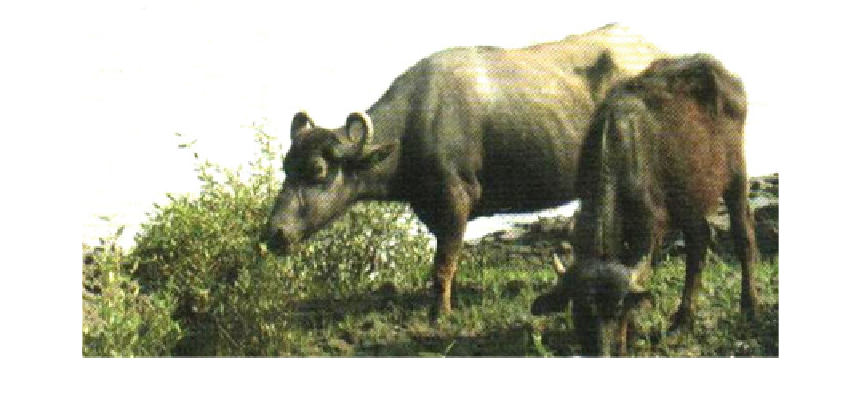Environmental Engineering Reference
In-Depth Information
species (particularly
) stabilized the
boulders with considerable accretion of silt par-
ticles. However, grazing by buffaloes has
adversely affected the vegetation of the island
(Fig.
7.39
). These buffaloes swim from adjacent
villages and graze on the coastal vegetation and
thus destroy the blue carbon reservoir of the
island.
D. Development of Coastal Structures
Coastal zones face a variety of pressures. Coastal
development results in the in
S. apetala
complexes, tends to shorten the foreshore and
reduces the extent of mud
fl
ats, upper-shore creek
and salt marsh systems.
Rapid pace of industrialization and urbaniza-
tion in the coastal zone can cause adverse impact
on the habitat of blue carbon. Besides increasing
nutrient loading, increased development is often
accompanied by alteration of coastal habitat that
effectively diminishes critical shallow-water
habitat. Examples of such alterations include the
construction of seawalls, breakwaters, revet-
ments, groins and jetties. Each of these struc-
tures, aimed at protecting coastal property,
refracts energy away from the shore and can
cause erosion and increase currents that can harm
seagrasses. Several such structures and hotels
have been constructed without giving any
importance to the endemic biodiversity in
developing countries. A relevant example in this
context is the developmental activities in the Goa
coast. Goa is India
lling of lagoons
and reclamation of coastline. Historically, the
Dutch has fought a long battle with the North Sea
and by an extensive system of dykes have
extended their landmass and turned the semi-
enclosed marine Zuider Zee into the freshwater
IJsselmeer. However, most coastal development
is piecemeal and insidious and hence dif
cult to
effectively regulate. The cumulative effects of
such developments within a particular estuary
can be depressing. For instance, about 2,500 ha
of mud
'
s smallest state by area and
the fourth smallest by population. Located in
West India in the region known as the Konkan, it
is bounded by the state of Maharashtra to the
north and by Karnataka to the east and south,
while the Arabian Sea forms its western coast.
Goa is India
ats in Scotland, have disappeared over
the last 200 years through a series of individually
unspectacular schemes, leading to a reduction in
the estuary
fl
sh biomass by 50 % (McLusky
et al.
1991
). This scale of loss of intertidal zone
has occurred or is forecast for many UK areas
(Prater
1981
) and must apply to most of the
world
'
s
s richest state with a GDP per capita
two and a half times that of the country as a
whole. This maritime state encompasses an area
of 3,702 km
2
'
s industrialized estuaries. Development,
whether by dykes or coastal defences, seaside
promenades,
'
(1,429 mi
2
) and lies between the
residential
'
marinas
'
or
dock
latitudes 14
°
53
′
54
″
N and 15
°
40
′
00
″
N and
Fig. 7.39
Grazing of mangroves by buffaloes

